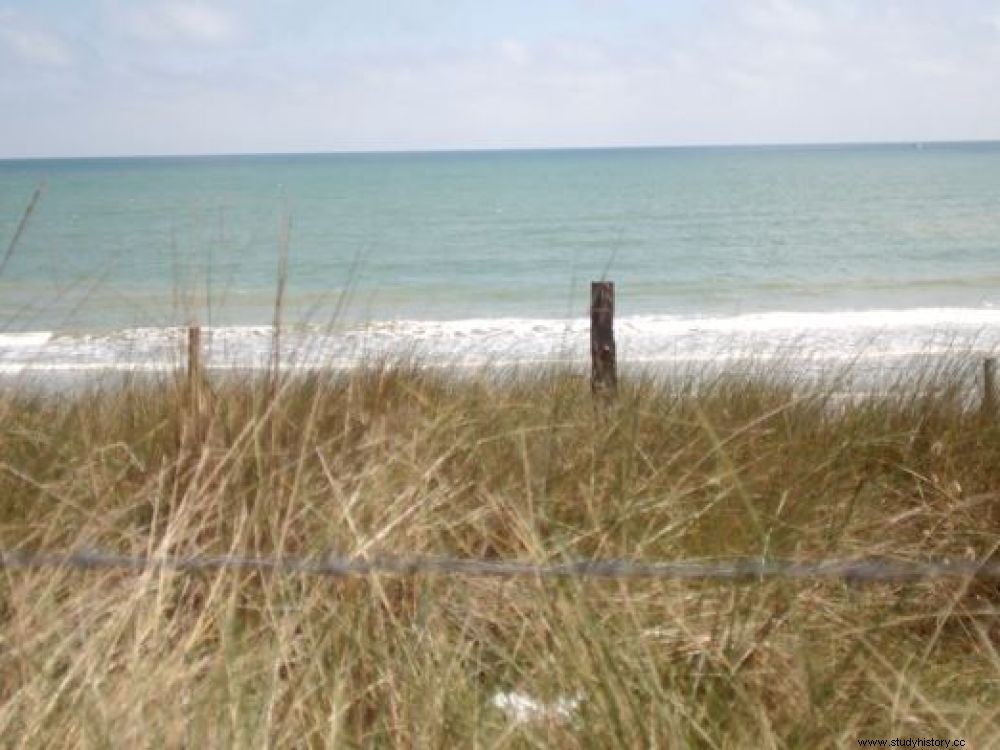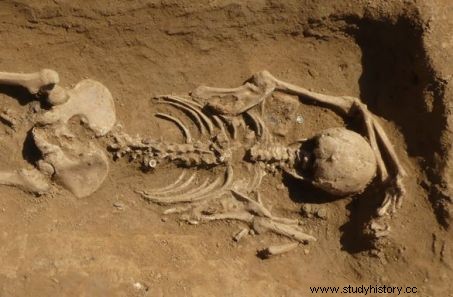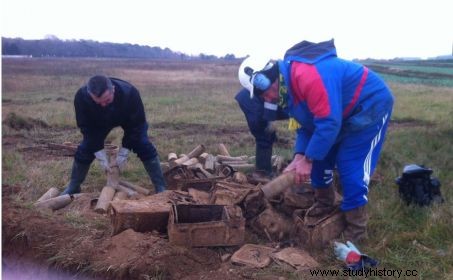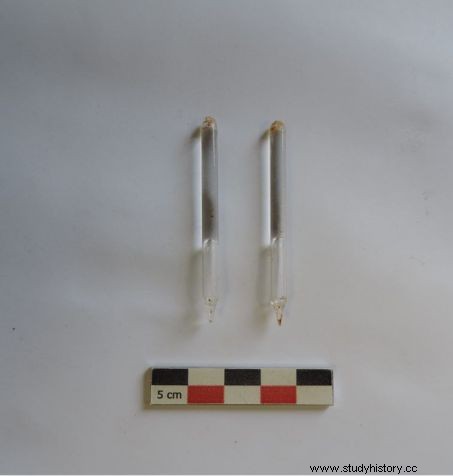Archaeologists are on the trail of one of the most terrible battles that followed the D-Day landings in Normandy in June 1944, that of "Côte 112". With discoveries referring to the violence of the fights, but also to the funerary practices of the battles. A subject little discussed in the context of the Second World War, a new scientific challenge for archaeology.

Utah Beach, in Normandy, one of the landing beaches, in June 1944.
"The men, hands over their ears, stare at the ground with eyes through which flashes of madness. They await the fatal blow that will reduce their frail bodies to loathsome bloody chunks of throbbing flesh. I stare at a flower of dandelion, close to my head, trying to hold me mentally. Wanting this little flower to be my anchor in this end of the world“… The author of these words? One of the fighters of "Côte 112", in Normandy, the site of one of the most terrible battles following the D-Day landings of June 6, 1944, where thousands of men were killed.
In France, archeology deals more and more often with periods of recent history. Thus, a team of researchers from Inrap has unearthed the remains of this important battle of the Second World War. With its share of unknown details. "Because of the work of historians, the importance of archives, or the many testimonies of those who directly experienced these events, we often think we know everything about these tragic periods. However, archaeological excavations provide other information , and today the mission of research is to identify and list all the vestiges of the Second World War in the departments of Calvados, Manche and Orne, whether they are the stigmata of the Occupation or Landing" , explains Dominique Corde, of the National Institute for Preventive Archaeological Research (INRAP). In particular those concerning the treatment of the dead during or immediately after the fighting". Because if there were major campaigns to collect bodies after the war, they were not intended to make expert opinions, and sometimes only part of the remains of combatants were recovered.
Thus, by recently unearthing the remains of three British soldiers, and that of a German soldier located about 250m away on a site in the town of Maltot (Calvados), the Inrap archaeologists found themselves in the heart of the infamous battle of "Côte 112", at Esquay-Notre-Dame. A strategic position which was the scene between July 10 and 11, 1944 of fierce fighting between German and Anglo-Canadian troops in the wake of the D-Day landings. Between attacks and counter-attacks, the human losses were counted in the thousands. "Several regiments of the Waffen SS were involved, one of which was equipped fearsome Tiger tanks. To deal with damage caused by these Panzers, some of which had been camouflaged, buried in ambush, 450,000 tons of bombs have been dumped on 'Hill 112' by the Allies in 48 hours! ", recalls Dominique Corde, thus giving an idea of the hell experienced by those who were on the ground. The countless bomb holes, tank pits, caterpillar footprints and human remains bear witness to the fury of these fights.

Human remains unearthed on Hill 112. Credits:Dominique Corde
"In temporary burials which we found, we also feel the anger survivors" , says the archaeologist. Thus, it is not uncommon to find, among the bodies buried in a hurry, those of German soldiers laid face down on the ground, as – it seems – a final humiliation. Or those of British buried by the Germans with sometimes a grenade under the body so as to cause still other deaths during their recovery. "We had never seen this before ", adds Dominique Corde, recalling in passing the risks taken by collectors and "detectorists"" of all kinds, who take "in memory"" belts and other objects from the dead of the war. Behaviors of looters - in addition to their undignified appearance - prohibited by law. "We routinely call the demining services when we encounter bodies whenever ammunition is present or doubts remain ", specifies Dominique Corde. Sometimes, they are also mass graves where were buried at the same time and in the urgency, the bodies of soldiers of the two camps.

Ammunition extracted from World War II archaeological sites by demining services. Credits:Dominique Corde/Inrap
From the remains of the approximately 17-year-old German soldier discovered on Hill 112, a pious medal and a small casing enclosing a virgin were collected. Religious objects that were already found on the bodies of soldiers from the First World War in eastern France. The contents of his pockets also yielded a British casing, some French currency kept in a cigarette case, and a condom. Above all, the archaeologists recovered for the first time in context a box containing a dozen glass vials, two of which were found at the level of the rib cage...

Two of the "ampules" discovered on a German soldier exhumed during archaeological excavations of "Côte 112", in Normandy. Credits:Dominique Corde / Inrap.
Intrigued by the presence of remains of liquid, two of them were sent to Paris where they were analyzed by Dr. Adeline Knapp, Dr. Jean-Claude Alvarez (Pharmacologist and toxicologist) at the University Hospital of Garches (Hauts -de-Seine), and by the anthropologist specialized in forensic medicine Philippe Charlier:"These capsules which we thought might contain cyanide* were actually a mixture of ether and chloroform ". A compound invented in the 19th century, but which had been heavily criticized. "Q a few drops too much was enough to switch from therapeutic dose to lethal dose. This powerful anesthetic taken in large quantities is a radical poison!" , explains Philippe Charlier, director of the research and education department of the Musée du Quai Branly, joined by Sciences et Avenir. In the case of "Hill 112", were German soldiers given such bulbs with the idea of "dealing with "in case of necessity? In other words, to end their lives if they were seriously injured or cornered? "On Hill 112, the Germans had been ordered to resist to the last", adds Dominique Corde. "These contemporary archaeological studies, which are not always well understood, due to their temporal proximity, nevertheless allow us to confront the narrative facts of a historiographical memory still under construction, with the reality of what the field reveals. An undeniable added value that falls within the framework of memorial archeology ". To date, 2000 Allied bodies are still missing in Normandy. The remains of the German soldier from "Hill 112" were deposited at the Service for the Maintenance of German Military Graves (Volksbund Deutsche KriegsgrAberfUrsorge ), and those of the three British soldiers, supported by the Commonwealth War Graves Commission .
*The question of the possible presence of cyanide arose legitimately, knowing that at the end of the war, more than 7000 Germans and many Nazi dignitaries committed suicide using it. Hitler himself might have absorbed it while shooting himself in the head. Philippe Charlier, who was able to examine the remains of his skull kept in the State Archives of the Moscow Museum (Russia), found reduction oxide on his braces. Possible traces left by its use.
